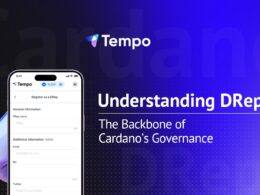
Welcome back to the second part of our series, which unravels a new approach to decentralized governance in the Cardano ecosystem. In part one, we covered an overview of the current governance design and the limitations of the Shelly model. We introduced an on-chain governance system through a viable constitution and a system where no group involved in decision-making overlooks the other. If you haven’t read through the first release, you can find it here.
In this continuation, we build on the foundation laid in part one by delving deeper into:
- The Cardano Constitution
- The proposal operation model
- Governance Bodies
The Cardano Constitution
This CIP introduces a viable constitution and a technique to incorporate amendments. It is driven by the notion of – “Decentralization: may it serve as our North Star, our guiding light, and our highest virtue”. As the starting point, it ignites motion for this decentralized governance model and lays out the framework for CIP 1776. The first amendments to this constitution will be a document of tremendous importance with substantive content; all amendments will follow a standard model for ratification, explained shortly.
There’s a need for a viable constitution to be outlined before establishing a brass system with a body to oversee the constitutionality of any governance action. CIP 1776 proposes that the constitution is recorded on-chain. The language used here is tactically designed to be universally acceptable to the community while offering the essential foundation necessary for future approval of governance actions on the Cardano blockchain.
The Proposal and Validation of Legislation
To claim that a system is balanced and decentralized, all governance actions must be clearly understood by all relevant stakeholders in the network. This proposal aims to ensure that all Cardano stakeholders participate in the governance action and contribute to the network’s future development by providing a transparent (clear) model for governance ratification; it means that no group holds power and influence over the network.
Next, the proposal aims to leverage the expertise and interest of Cardano community members, particularly the Stake Pool Operators (community members incentivized to uphold decentralization), to ensure that the governance model strikes a balance between accessibility and quality control. While any DRep can submit a governance proposal, a Stake Pool operator must second the proposal to move it forward to the next state.
The outlined structure provides a soft oversight of the proposal while encouraging members who need help getting the support of Stake Pool Operators to leverage their ADA and other supporters to meet the terms required for submitting governance protocols. However, all three bodies (covered in governance bodies) must approve all governance actions using votes to be ratified and enacted on-chain. Read on; here’s the standard model for ratification of the governance actions.
The Standard Model
This ratification model involves five steps regardless of the contents under vote. While multiple proposals at different stages may run in parallel, progression through each stage occurs at the epoch boundary. Worth noting that the standard model cannot move funds from the treasury. Here’s the rundown:
- Epoch 1 – Submission of proposals – Any Cardano network user can submit a proposal to any Stake Pool Operator. After every five days window, the SPO can choose to present one of the proposals to proceed to the next epoch, and they can also decide not to.
- Epoch 2 – SPO Voting – In this round, eligible SPO decides on their vote; each SPO meets the requirements and casts a single vote.
- Epoch 3 – DRep Voting Intent Declaration – DReps declare their voting intentions at this stage. Once they proclaim their voting intentions, they cannot alter them, and they are enacted as settled. The weighting of the voting is then determined in epoch 4.
- Epoch 4 – Voting Calculation – At this point, votes are counted. And if there’s a dispute from any DRep, ADA holders can redelegate their ADA. This structure ensures that elected members cannot vote against the intention of their supporters. This phase is closed by the majority of votes, rendering the success or failure.
- Epoch 5 – Constitutional Court Ruling – Finally, the Constitutional Court votes to evaluate the constitutionality of successful proposals. Beware that the Constitutional Court can take up to 5 epochs before ratifying a proposal. The success or failure heavily leans on the 5-2 (greater) operation model.
The model is uniquely armed to respond to unseen future events that jeopardize blockchain; for instance, quantum attacks, technical errors in code, or network attacks. Additionally, the entire governance undergoes a crucial oversight to resolve the centralization of power and network influence.
The Treasury Model
The treasury model outlined in CIP 1215 should be delayed until the Constitutional amendment is ratified. There are two reasons for this; first, to ensure a constitutional framework for authorizing governance actions is available before any financial activities, and second, to examine the treasury for potential attacks before any implementation.
Governance Bodies
As mentioned in our first series, the governance bodies consist of the Constitutional Court, Stake Pool Operators, and Delegated Representatives.
The Stake Pool Operators (SPOs) are crucial in the Cardano governance system. They create and maintain blocks in the blockchain and vote for proposals. To be eligible to vote, SPOs must have minted a block in the previous epoch. ADA holders will select SPOs by delegating their stakes to specific pools; those with more stakes are more likely to be selected and earn rewards. They can also delegate (entrust) their pledge to a DRep or vote directly. However, they can only use their pool’s delegation for voting up to one vote per epoch. SPOs cannot access funds from the Cardano treasury in the current model, but they will have a role in fund allocation once the treasury model is implemented. The DReps and Constitutional Court balance the power of SPOs.
The Constitutional Court is made up of representatives coined with the responsibility of individually and collectively upholding the Cardano Constitution. The primary role of the Constitutional Court is to review proposals and ensure that they comply with the Cardano Constitution before formal ratification, of course, without directly approving or rejecting them. The critical factor here is to promote transparency and moderate power concentration, driving fair, balanced governance. Any DRep can have a seat in the court. However, the composition of the seven members can be altered through subsequent proposal ratification.
In this model, DReps will act as the lowest chamber for governance in Cardano and vote based on their ADA holding. Users can also be DReps or delegate their voting rights to others. This allows for decentralized and democratic decision-making in Cardano.
Bringing It All Together
Now that you have read through our series for the CIP 1776, you should have a solid understanding of this newly proposed model for decentralized governance. You have seen how the Cardano network evolves and takes steps toward a robust and decentralized future through a new approach.
While you may have a different opinion, the proposers ask that all their arguments placed on this matter be based on facts (which is actually a good thing). In any case, we all have the same goal, seeing the Cardano blockchain succeed through pioneering decentralization.
You can read the proposal here.








